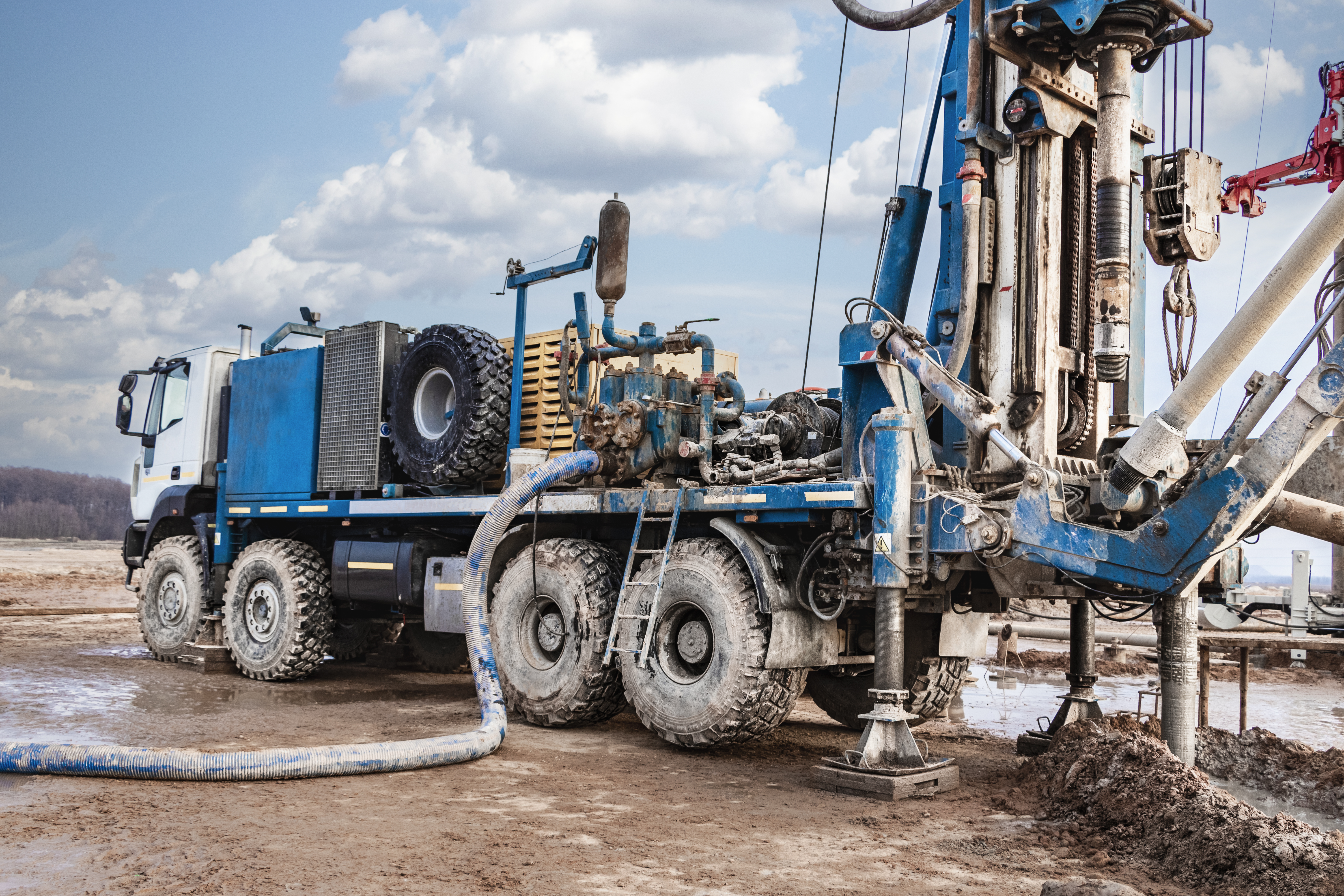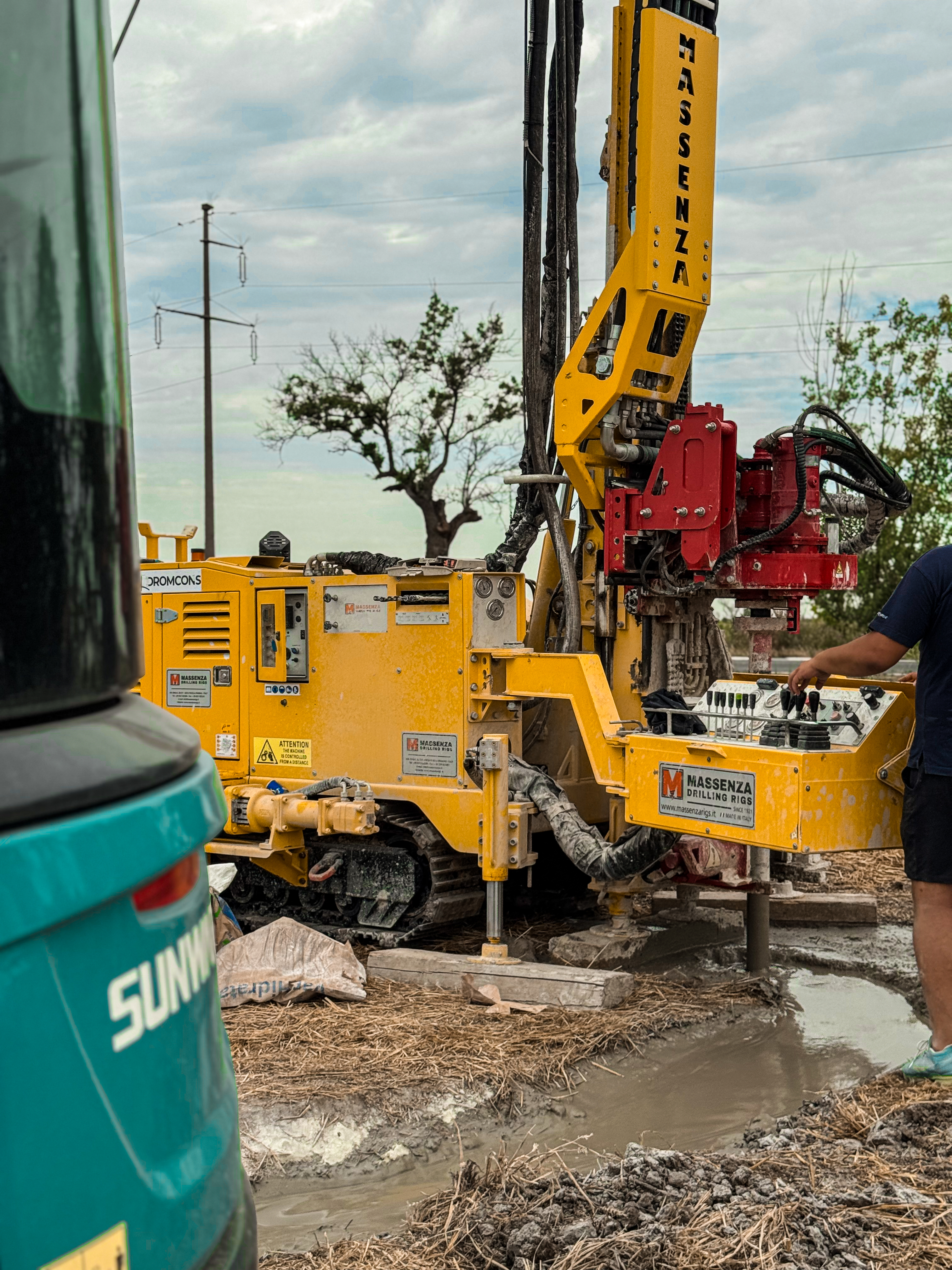In the previous article, we talked about choosing the right team for water drilling. Today, we turn our attention to geotechnical drilling and exploration drilling. If last time we discussed capturing and exploiting an aquifer layer to obtain drinking water, this time we focus on soil investigation and analysis.
This article is intended for:
Real estate developers, construction companies, and infrastructure firms that need detailed information about the soil before starting construction – through geotechnical drilling.
Mining companies or those in the oil industry to identify underground resources, mineral deposits, coal, or other valuable substances – through exploration drilling.
Read on to find out everything you need to know about these types of geological drilling.

Geotechnical drilling refers to works that analyze the land before construction. These involve collecting soil and rock samples from various depths, testing them in the laboratory, and interpreting the results to determine bearing capacity, as well as the stability and geotechnical characteristics of the land. They are indispensable in building roads, bridges, large buildings, or any structure, as safety depends on the quality of the foundation.
Exploration drilling, on the other hand, aims to identify underground resources such as water, minerals, gases, oil, or other geothermal resources. It is mainly used by mining companies, energy sector businesses, or natural resource companies and can help determine the feasibility of an exploitation project.

A professional drilling project in Romania takes place as follows:
I) Planning and data collection stage – preliminary studies, site selection
Any project starts with a desk analysis. In this stage, the team of specialists gathers information about the targeted area: geological maps, historical data, climate conditions, and any previous reports. Based on this information, they establish the exact drilling points, target depths, and technical methods to be used. This phase is important because it helps avoid unnecessary costs while ensuring a well-structured strategy.
II) Drilling execution with specialized equipment and modern technologies
Once the plan is set, the practical part begins. It is important for the team to use modern technologies to ensure accuracy and shorter execution times.
Dromcons continues to invest in state-of-the-art equipment, strengthening its position as a leader in infrastructure and geotechnical studies. The latest step is the integration of the Massenza Drilling Rig MI5, a more powerful and versatile machine than its predecessor, the MI2.
With extended drilling capabilities, the MI5 allows greater depths to be reached and enables a wide range of applications:
Find out more about the Massenza Drilling Rig MI5 here.
III) Sample analysis and results interpretation – laboratory, technical reports
After sampling, the materials are sent to the laboratory. At Dromcons, we have our own testing and analysis laboratory, where we conduct both geotechnical tests and tests for fresh and hardened concrete.
Based on the results, the team prepares the geotechnical study — a technical document detailing the soil properties and providing recommendations for construction or exploitation. This report is the foundation upon which structures are later designed and investment decisions are made.
Through exploration drilling, specialists can discover:
Infrastructure construction (roads, bridges, large buildings)
Before pouring the first cubic meter of concrete, you need to know exactly what kind of soil lies beneath your feet. Geotechnical prospecting identifies potential risk areas, such as unstable soils or shallow groundwater.
For example, in the construction of a bridge, geotechnical data determines the depth and type of foundation, reducing the risk of settlement or cracking. See the Dromcons case study for the DN14A Blăjel Bridge project, where our team carried out a rigorous geotechnical study, including medium-depth drilling, as well as shallow drilling and super heavy dynamic penetration tests, to ensure the bridge’s stability and durability.
Agriculture and irrigation
For irrigation projects, professional drilling makes it possible to identify underground water sources and assess their quality. This allows farmers and agricultural companies to plan efficient and sustainable irrigation systems.
Industrial projects and mining operations
In the mining industry, geological exploration drilling determines the viability of exploiting a deposit. The data obtained indicates the volume, quality, and location of resources, helping companies optimize their investments.
In short:
What geotechnical drilling helps with:
What exploration drilling helps with:
If you need geotechnical or exploration drilling, contact the Dromcons team for a quick offer and a professional land assessment.